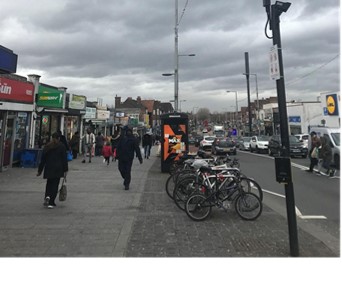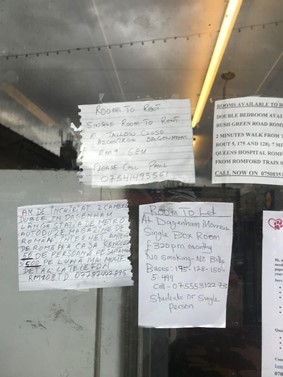London Journal entry 5: February 18, 2020
Gentrification from below, by Oznur Yardimci
Simon and I are on the tube from Barking to Dagenham. The tube is over the ground. As we approach Dagenham, the view outside changes. With small-scale one or two-storeyed houses, it looks more like the countryside. We step out of the train when we reach Dagenham Heathway station. You can see a shopping mall across the station. Behind it, you have a multi-storey apartment block standing in stark contrast to the other houses in the area. We take the left turn and start walking on Heathway Road.
We walk past off-license shops, barbers and estate agents. Many of the off-license shops have hand-written advertisements for rooms and jobs pasted on their windows. One even advertises internet TV to watch Nigerian Television.
We now enter Parsloes Ave. This is a quiet street with two-storey houses. Each house has a little garden and a car park. It is very quiet. Simon tells me these used to be council houses built in the post-war period, all part of the gigantic Becontree Housing Estate. The facades of some of the houses have been modified. Small rooms and skylights have been added to some. Others had undertaken extensions. It looked like people sought to invest in their houses, seeing them as assets rather than dwellings. Gentrification here seems to be led by individuals. Some of the houses sported flags of the British Nationalist Party.
We come across the Disablement Association of Barking and Dagenham (DABD). I learned later that they used to be a charity who now style themselves as an employment and training centre. Their website explains their aim in the following words: “We believe that everyone should have the opportunity for personal development to achieve their full potential in order to live their life as independently as possible and of their choosing.” We see an Adult College further down the road, which offered “low-cost courses” to young people in order to enhance their employability. Further down the road, you can see Kingsley Hall, which provides the community a free space, a church and a pre-school.



